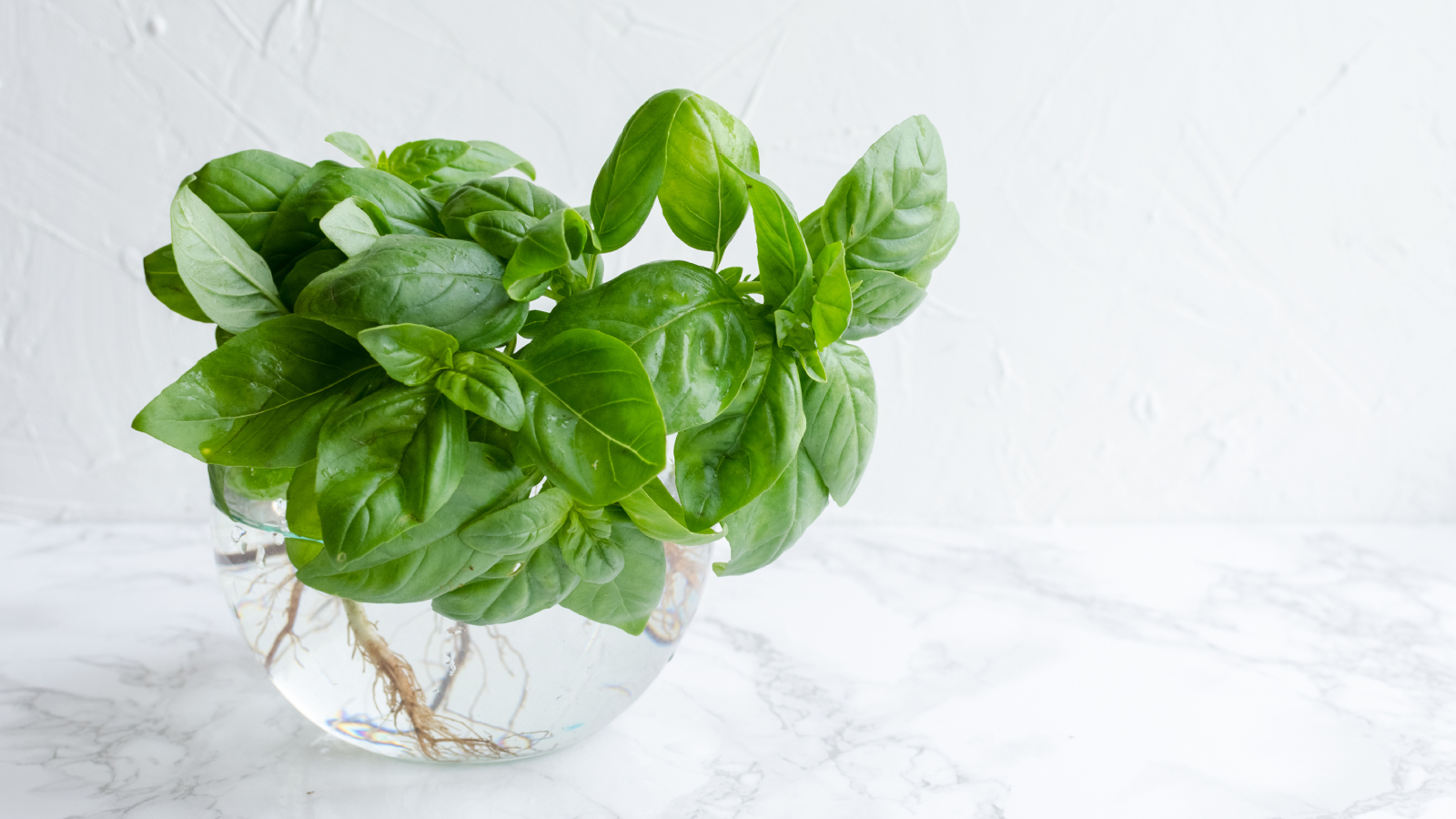
We often hear from gardeners who’d like to know how to propagate basil. Basil is one of the more popular tender herbs. There are quite a few varieties, but sweet basil (Ocimum basilicum) is the most common. While it can be grown as a perennial in USDA zones 10-11 most of us have to content ourselves with the summer’s bounty. Or do we? Basil propagation can be done via seed but you also easily grow basil from cuttings. I’ve done it many times before and I’m here to tell you how to grow basil from cuttings.
When to Propagate Basil
If you plant to grow your basil inside or in a greenhouse, you can propagate the plant by seed or cuttings any time of the year. If you want to start from seed indoors for transplant later outdoors, start basil seeds 6-8 weeks before the last frost for your area. If you wish to direct sow outdoors, wait to sow the seed until all risk of frost has passed and temperatures are above 50 F (10 C).
Best Ways to Propagate Basil
Basil can be grown either from seed or cuttings. Both are relatively simple. The beauty of propagating basil from cuttings is that you have a continuous, cheap, supply of basil year round, and the wait time until harvest is shorter than if grown from seed.
By Seed
Basil seeds are readily available everywhere that vegetable seeds can be found. The seeds are quite tiny but can be purchased coated making them easier to sow.
Folks in cooler climates usually start their basil indoors for later transplant outside but if you live in a warmer climate (zones 7-10) you can also direct sow after temperatures have warmed in the spring.
By Cutting
Sign up for the Gardening Know How newsletter today and receive a free copy of our e-book "How to Grow Delicious Tomatoes".
This is my favorite way to propagate basil. I will often take cuttings from a basil plant I’ve been growing outside during the summer. I take cuttings in about September, before any chance of frost is imminent for my area, root them, and then pot them to be grown as indoor basil plants through the winter months.
How to Propagate Basil by Seed
Select an area of full sun that is weed-free. Dig in some organic compost and mix well into the soil or use a good quality potting mix for containers. Sow seeds at a depth of ¼ inch (6 mm). Once the seedlings emerge, thin them to 3-4 inches (8-10 cm) apart.
Keep the seeded area consistently moist. Sidedress with liquid fertilizer every 2 weeks or lightly dig in a slow-release fertilizer.
How to Propagate Basil Cuttings
Basil cuttings are easy to propagate. You can get them from your own plants as I do or from a friend or neighbor’s plant. Another great place to source basil cuttings is the grocery store. Many stores sell live basil plants often year round, either in their garden or florist area or in the produce section. Often these are actually multiple plants that can be separated and later when they get bigger, used to take cuttings.
Rooting Cutting in Water
Snip a 4-6 inch (10-15 cm) long stem just below a leaf node (the area where the leaves emerge from the stem). Remove any leaves from the bottom third of the cutting. Place the cuttings into glasses filled with water.
Some people say to only use filtered water which is a good idea if your tap water is chlorinated. If you don’t have filtered water, leave tap water out for 24 hours to allow the chlorine to dissipate.
Place the cuttings in water in an area with bright yet indirect light. Change the water every couple of days. After about 2 weeks, you should see roots. When the roots have grown an inch or two (2.5 to 5 cm), pot the cuttings up in good quality, well-draining potting soil.
Rooting Cuttings in Soil
You can also opt to skip rooting in water and try rooting the cuttings directly in the soil. Pre-moisten your potting soil and fill your chosen containers, then clip your cuttings. You want the cutting to stay moist so don’t wait, but immediately poke the cut end of the cutting into the prepared soil. As above, remove any leaves from the bottom third of the cutting before planting it.
Cover the container with a clear plastic bag that will act as a mini greenhouse; retaining moisture and humidity. Mist the cuttings daily and keep an eye on the soil moisture. In about 2 weeks you should be able to tell if roots have formed; a gentle tug can confirm your suspicions.
At this point, you can repot it into a larger, permanent container or harden it off and transplant it outside, and voila, you have a beautiful, free basil plant!
Frequently Asked Questions
Can You Grow Basil in Water?
Yes, you can grow basil and many other tender herbs in a simple glass of water for months.
How Do You Prune Basil for Propagation?
Look for a leaf node and with a sterile shear or knife, cut a 4-6 inch (10-15 cm) cutting from the parent plant. Remove leaves from the lower third of the cutting and then place it in a container of water or potting soil to root.

Amy Grant has been gardening for 30 years and writing for 15. A professional chef and caterer, Amy's area of expertise is culinary gardening.
